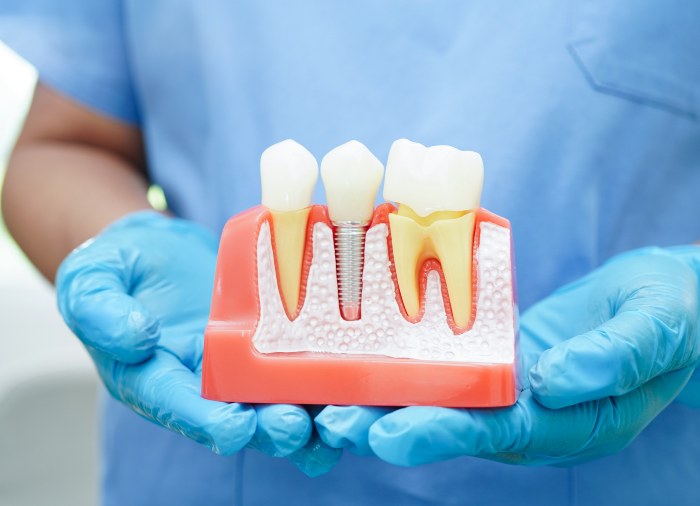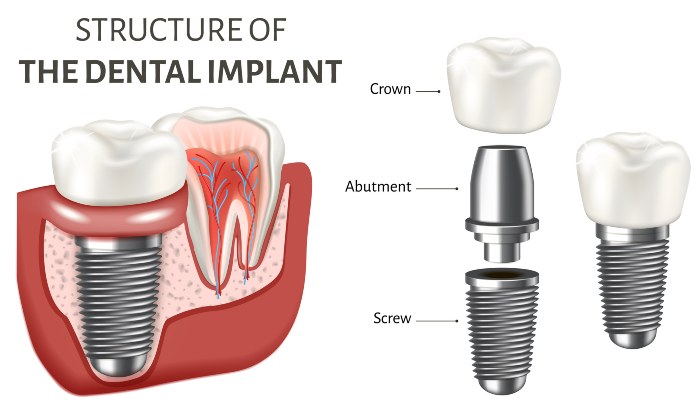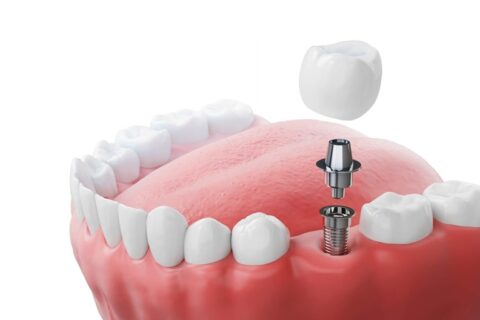Types of Dental Implants
Exploring the Types of Dental Implants
Missing teeth are no match for dental implants! This restorative technique can give you the smile you’ve always wanted despite knocked-out teeth, past infections, and tooth decay. At S&L Dental, we’re here to educate our Scottsdale and Paradise Valley, AZ patients about the different types of dental implants and how they can make a major difference to their self-esteem and overall well-being. Learn more about this cosmetic dentistry treatment and why one size doesn’t always fit all.

What Is a Dental Implant?
Let’s start with the basics—what is a dental implant? Dental implants are a type of cosmetic dentistry that provides a permanent solution for missing teeth. Small, titanium posts are surgically placed into the jawbone to act as artificial roots for replacement teeth. Then, a crown is attached on top, giving you a good-as-new smile.
What Are the Types of Dental Implants?
Dental implants are not a one-size-fits-all solution, and understanding the different types available can help you make an informed decision about your oral health. The choice of implant often depends on your individual needs and the specific anatomy of your jaw. Our dentists will help you determine which type of dental implant will work best for you. Here’s a brief overview of two options:
Endosteal Implants
Endosteal implants are the go-to choice for many patients and dentists alike. Their popularity stems from their high success rate and ability to provide a secure foundation for replacement teeth. In addition to durability, endosteal implants offer versatility in terms of placement and application. They can be used to replace a single tooth, support a bridge, or even stabilize full-arch prosthetics, making them a flexible solution for diverse dental needs.
Subperiosteal Implants
For patients without enough healthy jawbone for traditional implants, subperiosteal implants are an alternative solution. These implants sit on top of the jawbone, beneath the gum tissue, and are supported by a metal framework. The placement of subperiosteal implants requires precise planning and expertise, as the framework must be custom-designed to fit the contours of the jawbone. In some cases, we may recommend bone grafting to further support your implants.

Understanding the Dental Implant Procedure
The process of getting dental implants takes lots of planning and several steps. However, the end result is often worth the time. At S&L Dental, we ensure each of our cosmetic dentistry patients understands how the dental implant procedure works before ever committing to treatment. Take a look at this brief overview of the dental implant process:
- Initial Consultation—We begin with a consultation. At this appointment, your dentist will learn more about your oral health and determine your suitability for the procedure. We may take dental X-rays or do some 3D imaging to take a deeper look at your mouth and jawbone.
- Treatment Planning—Once we have a better understanding of your condition, we’ll develop a personalized treatment plan. As a part of the plan, we’ll decide how many implants you need for optimal results.
- Implant Placement—Next, it’s time to place the implant into the jawbone using local anesthesia. We make a small incision into the gums and insert a small titanium post. Afterward, we stitch the gum back together to cover the implant while it heals.
- Healing—During the healing period, the implant integrates into the jawbone through a process called osseointegration. This takes anywhere from a few weeks to a few months. We may provide temporary crowns to maintain the appearance and function of your teeth. Be sure to check in with your dentist if you have any questions during the healing process.
- Abutment Placement—Once healing is complete, we perform a minor surgical procedure to attach an abutment to the implant. This involves reopening the gum to expose the implant and securing the abutment, which connects the implant to the prosthetic tooth.
- Crown Attachment—After the gum tissue has healed around the abutment, impressions are taken to custom-make the crown. The final crown, designed to match your natural teeth in color and shape, is then attached to the abutment.
- Follow-Up Appointments—Be sure to schedule follow-up appointments at S&L Dental—this ensures the implant is functioning correctly. You won’t need any special maintenance to keep your implants in good shape. Simply prioritize daily brushing and flossing!
Get to Know the Benefits of Dental Implants
Patients often seek out dental implants because they provide a long-lasting and natural-looking solution to tooth loss. Unlike dentures, which can slip and slide, implants remain securely in place, offering both comfort and confidence. But the benefits extend beyond aesthetics. Our patients report all of these advantages:
- Improved Chewing and Speaking Ability—Dental implants function like natural teeth, allowing you to enjoy a wide variety of foods and communicate clearly without concern.
- Enhanced Self-Esteem—With a complete and aesthetically pleasing smile, many people feel an increased sense of self-esteem and confidence in both social and professional settings.
- A Natural Appearance—Implants blend seamlessly with existing teeth, maintaining the authenticity of your smile. While dentures are a good choice for some patients, they won’t look as natural as dental implants.
- Minimal Tooth Shifting—By maintaining the structure of the jaw, implants prevent neighboring teeth from shifting into the gap left by a missing tooth.
- Little Maintenance—Unlike other cosmetic treatments, dental implants require no additional maintenance beyond brushing, flossing, and regular dental check-ups. What’s more, dental implants are made to last—most last a lifetime!
Single Vs. Multiple: What’s Best for You?
After choosing the right type of dental implant for your needs, we’ll need to decide between single and multiple implants. Some patients do just fine with a single implant, while others need multiple to achieve the best outcome. We consider factors such as the number of missing teeth, bone density, and your overall oral health before making a decision. Learn more about the pros of each option:
Single Implants
We recommend single implants for patients who only need to replace one tooth. This option provides a natural look and feel, seamlessly integrating with your existing teeth. It’s a straightforward solution that prevents adjacent teeth from shifting and maintains jawbone health.
Multiple Implants
For patients missing several teeth in a row or throughout the mouth, multiple implants may be required. In some cases, an implant-supported bridge can be used to replace multiple teeth, bringing you both stability and functionality. This approach minimizes the need for individual implants for each tooth and may greatly reduce the cost and recovery time.
Meet With Our Dentist Today
Dental implants can make a world of difference in both your self-confidence and oral health. If you’re interested in this exciting treatment, get in touch with the team at S&L Dental. We proudly serve our patients with some of the best dental care in Scottsdale, AZ. Contact us today to set up an appointment.

